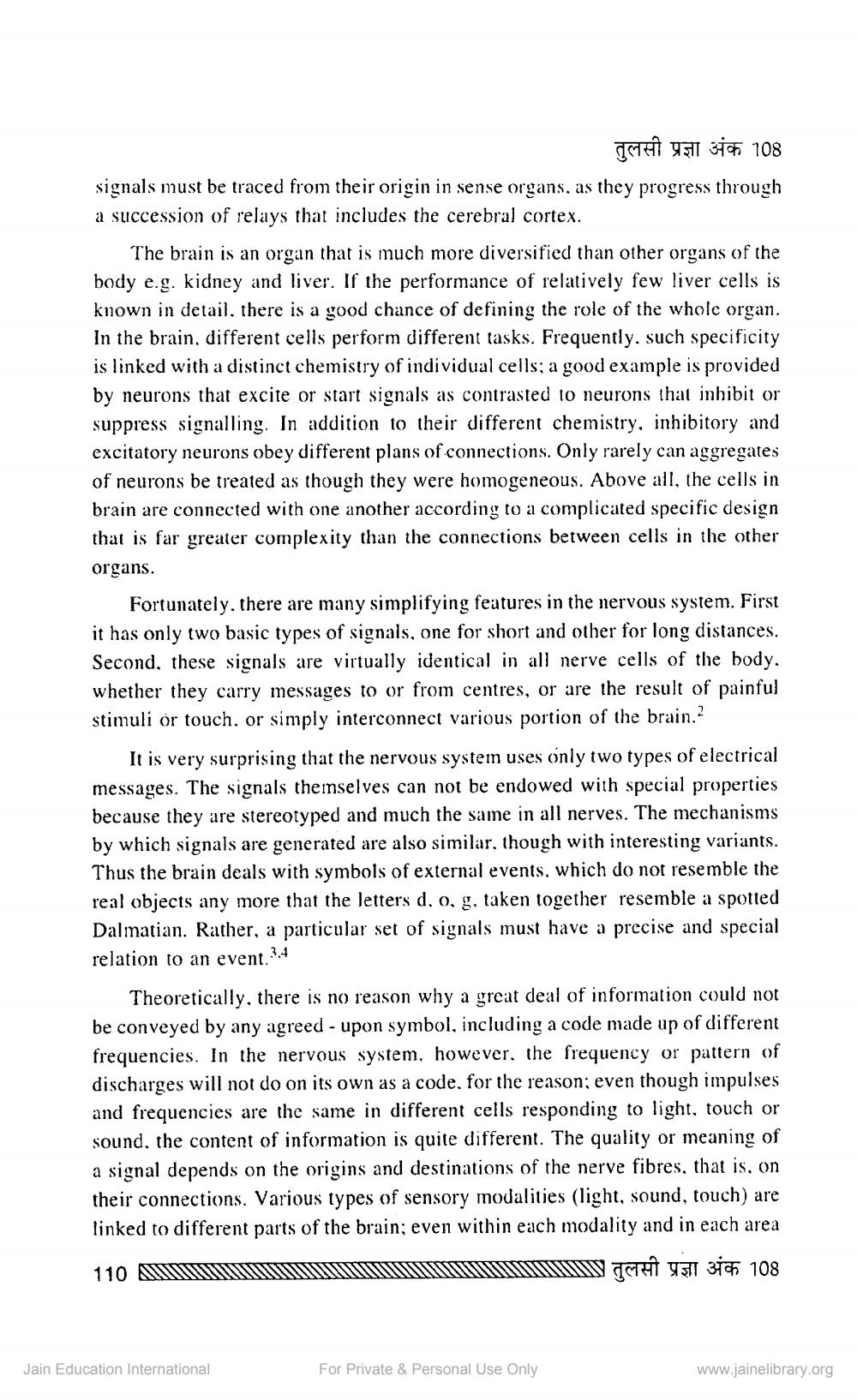________________
ne 4511 si 108 signals must be traced from their origin in sense organs, as they progress through a succession of relays that includes the cerebral cortex.
The brain is an organ that is much more diversified than other organs of the body e.g. kidney and liver. If the performance of relatively few liver cells is known in detail, there is a good chance of defining the role of the whole organ. In the brain, different cells perform different tasks. Frequently, such specificity is linked with a distinct chemistry of individual cells; a good example is provided by neurons that excite or start signals as contrasted to neurons that inbibit or suppress signalling. In addition to their different chemistry, inhibitory and excitatory neurons obey different plans of connections. Only rarely can aggregates of neurons be treated as though they were homogeneous. Above all, the cells in brain are connected with one another according to a complicated specific design that is far greater complexity than the connections between cells in the other organs.
Fortunately, there are many simplifying features in the nervous system. First it has only two basic types of signals, one for short and other for long distances. Second, these signals are virtually identical in all nerve cells of the body. whether they carry messages to or from centres, or are the result of painful stimuli or touch, or simply interconnect various portion of the brain.?
It is very surprising that the nervous system uses only two types of electrical messages. The signals themselves can not be endowed with special properties because they are stereotyped and much the same in all nerves. The mechanisms by which signals are generated are also similar, though with interesting variants. Thus the brain deals with symbols of external events, which do not resemble the real objects any more that the letters d, o, g, taken together resemble a spotted Dalmatian. Rather, a particular set of signals must have a precise and special relation to an event. 4
Theoretically, there is no reason why a great deal of information could not be conveyed by any agreed - upon symbol, including a code made up of different frequencies. In the nervous system, however, the frequency or pattern of discharges will not do on its own as a code, for the reason; even though impulses and frequencies are the same in different cells responding to light, touch or sound, the content of information is quite different. The quality or meaning of a signal depends on the origins and destinations of the nerve fibres, that is, on their connections. Various types of sensory modalities (light, sound, touch) are linked to different parts of the brain; even within each modality and in each area 110 A ll
W WW THI ya Bia 108
1551
Jain Education International
For Private & Personal Use Only
www.jainelibrary.org




